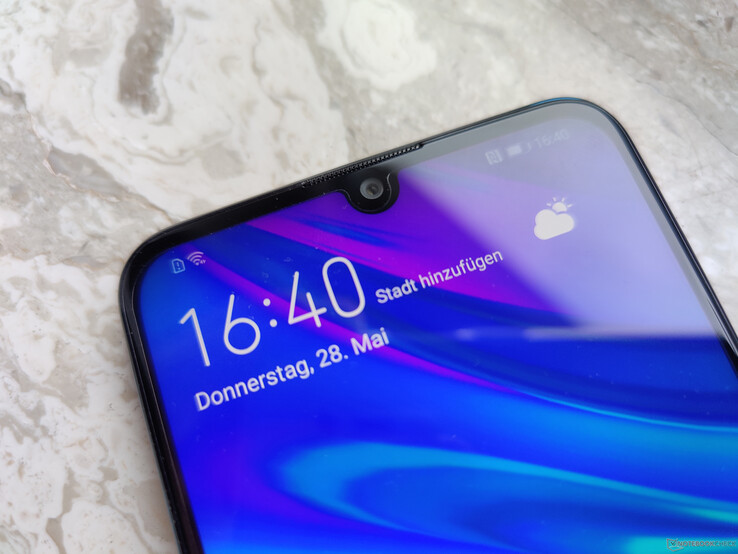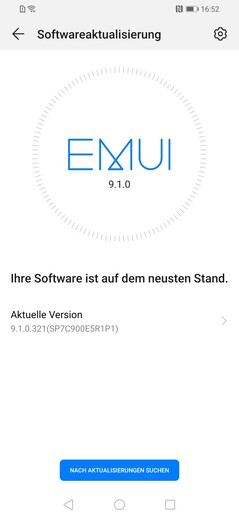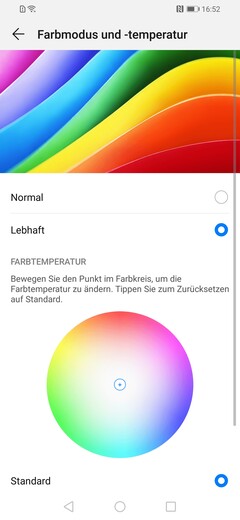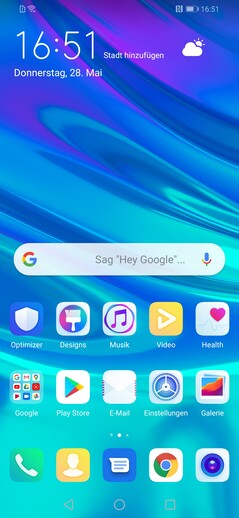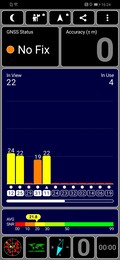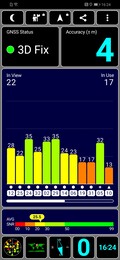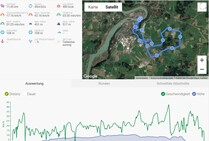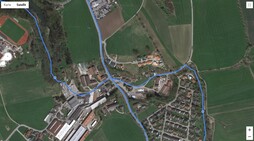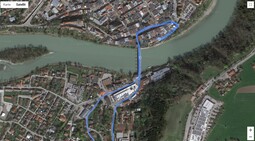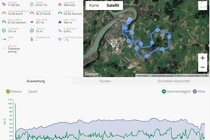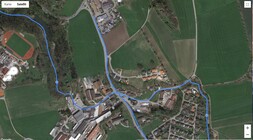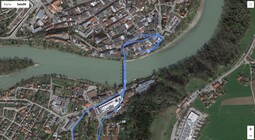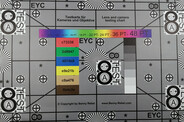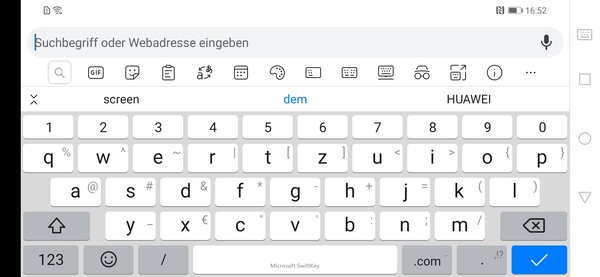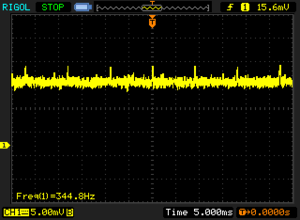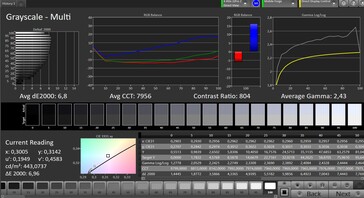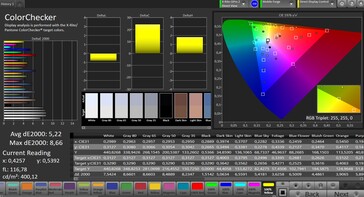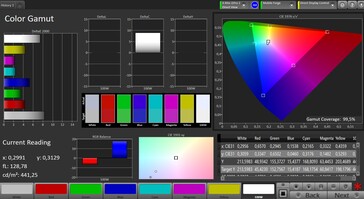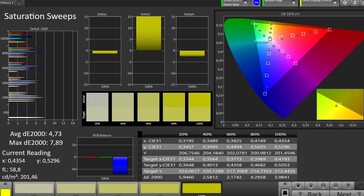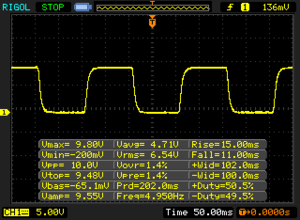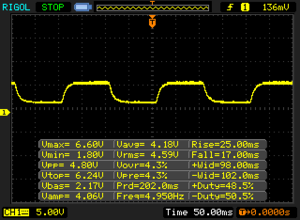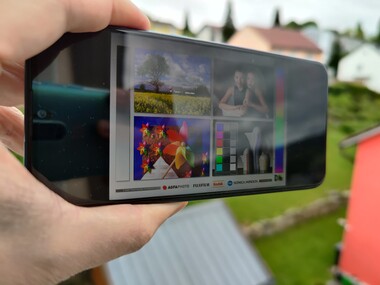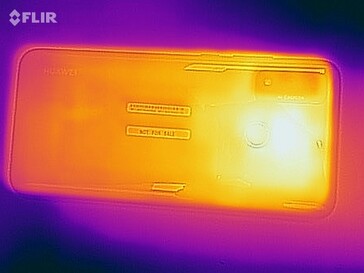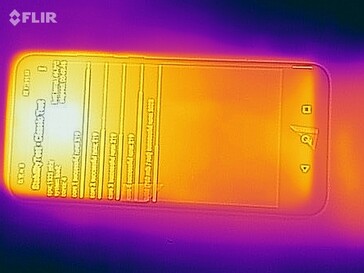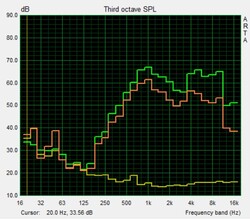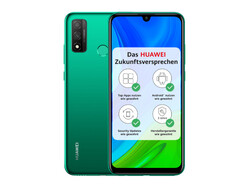Huawei P Smart 2020 Smartphone Review - Comfortable and stale
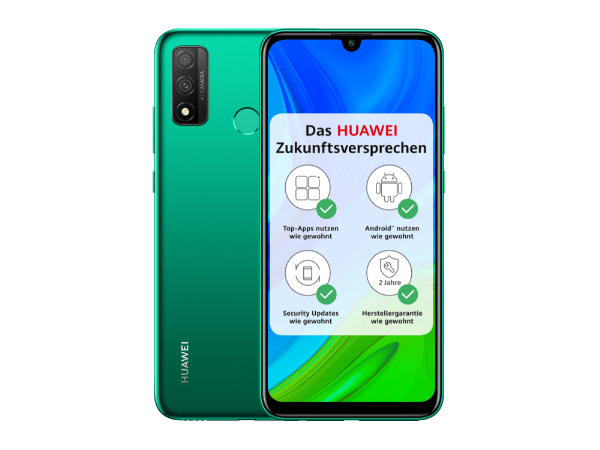
You can really understand Huawei and that the Chinese manufacturer is starting to get desperate: Due to the American technology ban, the manufacturer has no access to Google Services anymore. This also makes the certification for new models difficult or even impossible. What still could be smartly covered up to a year ago now becomes quite obvious in the Huawei P Smart 2020: Huawei has started to simply reissue older models and only changes as much that a new certification still won't become necessary.
The Huawei P Smart 2019 was a popular smartphone, so perhaps it isn't that bad if Huawei doesn't change much in the successor, right? Well, we want to find out exactly that in our test.
Note: Due to problems installing some benchmarks, we asked Huawei for an additional testing unit. We will update this test as soon as we have additional test results on the Huawei P Smart 2020.
Comparison Devices
Rating | Date | Model | Weight | Drive | Size | Resolution | Price |
|---|---|---|---|---|---|---|---|
| 76.6 % v7 (old) | 05 / 2020 | Huawei P Smart 2020 Kirin 710, Mali-G51 MP4 | 163 g | 128 GB eMMC Flash | 6.21" | 2340x1080 | |
| 75.7 % v7 (old) | 05 / 2020 | Nokia 5.3 SD 665, Adreno 610 | 185 g | 64 GB eMMC Flash | 6.55" | 1600x720 | |
| 80.7 % v7 (old) | 05 / 2020 | Xiaomi Redmi Note 9S SD 720G, Adreno 618 | 209 g | 128 GB UFS 2.0 Flash | 6.67" | 2400x1080 | |
| 76.6 % v7 (old) | 05 / 2020 | Motorola Moto G8 SD 665, Adreno 610 | 188 g | 64 GB eMMC Flash | 6.40" | 1560x720 | |
| 84.9 % v6 (old) | 12 / 2018 | Huawei P Smart 2019 Kirin 710, Mali-G51 MP4 | 160 g | 64 GB eMMC Flash | 6.20" | 2340x1080 |
Case - A light plastic case
With Emerald Green, there is a new color for the P Smart 2020 that the predecessor did not have, but otherwise Aurora Blue and Midnight Black are the known variations. The outside of the P Smart 2020 in these colors that are available for both models looks very similar to the P Smart from 2019. Only the camera module was updated to Huawei's current design, and it does indeed look to have a higher quality than that of the predecessor. The P Smart 2020 is a quite slim and light smartphone, which of course is primarily due to its small battery. However, this aspect might still be interesting to all those who find current smartphones too large and heavy.
The smartphone fits in the hand comfortably, is built fairly robust, and it only creaks very quietly when trying to twist it. The smartphone hardly reacts to pressure at the front or back. However, soon after starting to use it, you can see some minimal scratches on the case when the light hits it right, and fingerprints also become quickly visible. But at least the screen protector has been placed better than in the predecessor and you can hardly see or feel it in everyday operation.
Equipment - The Huawei has more storage
With 128 GB of storage, the Huawei P Smart 2020 is better equipped than its predecessor, offering some advantage to other devices in its price class here. There is also 4 GB of working memory now, and you can use a microSD card to expand the storage, but then one of the two SIM slots will be occupied.
NFC is on board, allowing you to use Google Pay for touchless payments, for example. Too bad that there is still only a micro USB connection, even though USB-C is now available more often even in affordable devices and should definitely become the standard.
Software - Android 9? You read right!
It is true that the Huawei P Smart 2020 really still comes with Android 9 like its predecessor, so it uses an older version of Google's operating system and also the corresponding EMUI 9, Huawei's in-house user interface. The security patches are from February 2020, so they are already aged at the time of our testing.
Annoying: Since Huawei's EMUI 9 is based on Android 9, there is no Dark Mode for the system that displays all backgrounds dark. In addition, we had some problems when installing several apps, but we were unable to verify the reasons. Apps could not be installed from APKs at all, even though we had set all the permissions, and some apps from the Google Play Store also had some problems with the installation. Possibly this was also due to our test unit, so we asked Huawei for another device. We will update this test, if necessary.
At least Huawei does not install any third-party apps but only installs a comprehensive in-house app package with free tools, some of which can also be uninstalled. Those who have several Huawei and/or Honor smartphones in their group of friends can connect them via a Party mode and play the same music on all devices, like having a sound system with several speakers.
Communication and GPS - Few LTE bands
With LTE Cat.6, the maximum LTE speed is okay for the price class, but just the minimum of the necessary LTE frequency bands are supported, so that it might become difficult to use mobile Internet when you travel abroad. The reception of the Huawei P Smart 2020 is fairly good indoors, and we had full reception outdoors in the city surroundings most of the time.
In terms of WLAN, Wi-Fi 5 is supported. This really is customary for this price class, but there are also still some slower models for a similar amount of money. The P Smart 2020 is at about the level of its predecessor as far as the speeds, showing some slightly inconsistent data rates in the communication with our Netgear Nighthawk AX12 reference router.
| Networking | |
| iperf3 transmit AX12 | |
| Xiaomi Redmi Note 9S | |
| Huawei P Smart 2019 | |
| Huawei P Smart 2020 | |
| Nokia 5.3 | |
| Motorola Moto G8 | |
| iperf3 receive AX12 | |
| Xiaomi Redmi Note 9S | |
| Huawei P Smart 2020 | |
| Huawei P Smart 2019 | |
| Nokia 5.3 | |
| Motorola Moto G8 | |
Beidou, GLONASS, and GPS are the satellite networks supported for location determination. Indoors, if at all, locating is only possible near windows and even then only approximately. However, outdoors the location accuracy quickly increases up to four meters.
Our practical test tells us more about the locating accuracy of the Huawei smartphone. For this, we jump on our bike and also take the Garmin Edge 520 professional navigation device for comparison. At first glance, the Huawei smartphone does not give much reason for complaint. The locating is fairly accurate and sticks with the route, if you disregard some small lapses. However, there is one dropout in the middle when recording the route, as you can see in the top of the junction image. Overall, you can use the smartphone for navigation if absolute accuracy is not so important and if you can also live with some rare dropouts.
Telephone Functions and Voice Quality - P Smart with good voice reproduction
Huawei's own Phone app is slightly different than Google's standard app but is just as easy to use and can be learned quickly. We did not see an option for Wi-Fi Calling or VoLTE in the menu.
The voice quality using the internal earpiece is fairly good. At maximum volume, the voice of our conversation partner booms slightly, but otherwise the voice sounds present and quite warm. Our own voice is also transferred well, regardless of how quietly or loudly we speak. The voice quality is also fairly good using the speaker, and our own voice is recorded clearly by the microphone.
Cameras - Only a single photo lens
Yes, the Huawei P Smart 2020 does have a dual camera, but no, this is not a zoom camera with several focal distances. The second lens is only good for determining the depth sharpness, so it is not used to take pictures.
At 13 megapixels, the main camera offers the same specs as the predecessor. It takes decent pictures, but the details quickly look washed-out, and the contrast is also higher in other smartphone cameras. While images taken at low light quickly lose sharpness, the brightness is fairly good.
Overall, you can take reasonable pictures with the main camera. However, the P Smart 2020 lacks the flexibility of a zoom camera that is offered by other current smartphones of this price range.
On one hand, the camera app is very extensive and offers many functions. On the other hand, you can for example only use the AI camera, which automatically adjusts to the best settings, at an 8-megapixel image size. Videos can be recorded at a maximum of 1080p and 30 fps. The image quality is decent, and the brightness is still good in weaker light conditions.
Inside a water-drop notch in front, there is an 8-megapixel front camera, which is already known from the predecessor. You can also take serviceable selfies with it. The camera does fairly well with brightness differences within an image and offers a decent sharpness, at least at small enlargement sizes.
Under controlled light conditions in our test lab, the main camera demonstrates good color reproduction and contrast. However, if there is hardly any light, the lens can also hardly recognize anything anymore.
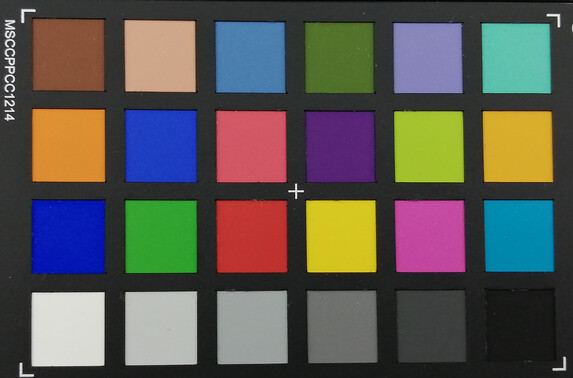

Accessories and Warranty - Security for two years
Besides the smartphone, the box also includes the charger, a USB cable, and a SIM tool. Huawei also includes a wired headset that offers a fairly acceptable sound.
The manufacturer offers 24 months of warranty on the smartphone.
Input Devices and Operation - A fingerprint sensor on the back
The touchscreen can be operated easily everywhere, and it is also sensitive in the corners. The system is fast enough for smooth operation in many situations, and small stutters or wait times only occur from time to time.
SwiftKey is used as the keyboard app, and those who don't like it can also install another app. However, when doing that, you should be careful whom you trust, since the manufacturer of a keyboard app can potentially read all your input. This includes passwords, for example, when they are transferred to the server for spell checking.
The fingerprint sensor on the back unlocks the device with a slight delay but is very reliable.
Display - Huawei with mediocre brightness
The display offers an expanded Full HD resolution, which is a good thing for this price range but not completely unusual. The display is based on IPS technology. The measurements for the brightness remind us of the predecessor, and at 448 cd/m² on average, they are at a rather low level. The brightness distribution is fairly even.
| |||||||||||||||||||||||||
Brightness Distribution: 87 %
Center on Battery: 446 cd/m²
Contrast: 875:1 (Black: 0.51 cd/m²)
ΔE ColorChecker Calman: 5.22 | ∀{0.5-29.43 Ø4.77}
ΔE Greyscale Calman: 6.8 | ∀{0.09-98 Ø5}
99.5% sRGB (Calman 2D)
Gamma: 2.43
CCT: 7956 K
| Huawei P Smart 2020 IPS, 2340x1080, 6.2" | Nokia 5.3 IPS, 1600x720, 6.6" | Xiaomi Redmi Note 9S IPS, 2400x1080, 6.7" | Motorola Moto G8 IPS, 1560x720, 6.4" | Huawei P Smart 2019 IPS, 2340x1080, 6.2" | |
|---|---|---|---|---|---|
| Screen | 1% | 22% | 35% | 34% | |
| Brightness middle (cd/m²) | 446 | 523 17% | 622 39% | 504 13% | 458 3% |
| Brightness (cd/m²) | 448 | 482 8% | 612 37% | 452 1% | 440 -2% |
| Brightness Distribution (%) | 87 | 86 -1% | 94 8% | 83 -5% | 85 -2% |
| Black Level * (cd/m²) | 0.51 | 0.46 10% | 0.56 -10% | 0.28 45% | 0.35 31% |
| Contrast (:1) | 875 | 1137 30% | 1111 27% | 1800 106% | 1309 50% |
| Colorchecker dE 2000 * | 5.22 | 6.22 -19% | 3.98 24% | 3.84 26% | 1.4 73% |
| Colorchecker dE 2000 max. * | 8.66 | 10.56 -22% | 7.33 15% | 6.1 30% | 3.8 56% |
| Greyscale dE 2000 * | 6.8 | 8 -18% | 4.5 34% | 2.7 60% | 2.4 65% |
| Gamma | 2.43 91% | 2.226 99% | 2.206 100% | 2.235 98% | 2.22 99% |
| CCT | 7956 82% | 8856 73% | 7361 88% | 7125 91% | 6235 104% |
| Color Space (Percent of sRGB) (%) | 114.9 |
* ... smaller is better
Screen Flickering / PWM (Pulse-Width Modulation)
| Screen flickering / PWM detected | 344 Hz | ≤ 10 % brightness setting | |
The display backlight flickers at 344 Hz (worst case, e.g., utilizing PWM) Flickering detected at a brightness setting of 10 % and below. There should be no flickering or PWM above this brightness setting. The frequency of 344 Hz is relatively high, so most users sensitive to PWM should not notice any flickering. However, there are reports that some users are still sensitive to PWM at 500 Hz and above, so be aware. In comparison: 53 % of all tested devices do not use PWM to dim the display. If PWM was detected, an average of 8081 (minimum: 5 - maximum: 343500) Hz was measured. | |||
At 0.51 cd/m², the black value is only average, and at high brightness dark areas appear more dark gray than black. Colors are also not that vibrant, which you can see in the low contrast value.
The measurements with the CalMAN software and the spectral photometer show that the display has a strong blue tint. However, you can adjust the white balance fairly extensively in the settings, allowing you to bring the display closer to your personal needs and tastes.
Display Response Times
| ↔ Response Time Black to White | ||
|---|---|---|
| 26 ms ... rise ↗ and fall ↘ combined | ↗ 15 ms rise | |
| ↘ 11 ms fall | ||
| The screen shows relatively slow response rates in our tests and may be too slow for gamers. In comparison, all tested devices range from 0.1 (minimum) to 240 (maximum) ms. » 61 % of all devices are better. This means that the measured response time is worse than the average of all tested devices (20.2 ms). | ||
| ↔ Response Time 50% Grey to 80% Grey | ||
| 42 ms ... rise ↗ and fall ↘ combined | ↗ 25 ms rise | |
| ↘ 17 ms fall | ||
| The screen shows slow response rates in our tests and will be unsatisfactory for gamers. In comparison, all tested devices range from 0.165 (minimum) to 636 (maximum) ms. » 66 % of all devices are better. This means that the measured response time is worse than the average of all tested devices (31.6 ms). | ||
Outdoors, the display has some visible difficulties. While on cloudy days, its brightness is sufficient, you should look for a shady place on sunny days. The viewing angles are fairly decent, and there are only slight brightness differences when you look at the display from the side. The display contents always remain easily recognizable.
Performance - We already know the SoC from before
The HiSilicon Kirin 710 is the SoC that is currently used in probably most of the smartphones from Huawei and Honor. While the processor is still fairly fast even in 2020, you do notice that technology has advanced at this point. Huawei will have to think about something new next year for sure, in order to be able to keep up. However, currently it is still sufficient for fairly smooth operation with some smaller stutters under high loads.
In terms of the graphics, the smartphone is currently also able to still keep up, but the Xiaomi Redmi Note 9S already offers more power.
| VRMark - Amber Room (sort by value) | |
| Huawei P Smart 2020 | |
| Xiaomi Redmi Note 9S | |
| Average HiSilicon Kirin 710 (961 - 1146, n=3) | |
In terms of its surf speeds, the Huawei P Smart 2020 places in the middle of the field of test devices. In practice, this means that you have to live with some load times for websites, particularly with images. However, the Huawei smartphone is well-suited overall for surfing.
| Jetstream 2 - 2.0 Total Score | |
| Average of class Smartphone (23.8 - 387, n=147, last 2 years) | |
| Xiaomi Redmi Note 9S (Chrome 81) | |
| Average HiSilicon Kirin 710 (30 - 33, n=8) | |
| Huawei P Smart 2020 (Chrome 81) | |
| Motorola Moto G8 (Chrome 81) | |
| JetStream 1.1 - Total Score | |
| Xiaomi Redmi Note 9S (Chrome 81) | |
| Huawei P Smart 2020 (Chrome 81) | |
| Average HiSilicon Kirin 710 (47 - 55.1, n=10) | |
| Huawei P Smart 2019 (Chrome 70) | |
| Motorola Moto G8 (Chrome 81) | |
| Speedometer 2.0 - Result 2.0 | |
| Average of class Smartphone (15.2 - 643, n=119, last 2 years) | |
| Xiaomi Redmi Note 9S (Chome 81) | |
| Average HiSilicon Kirin 710 (30.4 - 33.9, n=6) | |
| Huawei P Smart 2020 (Chome 81) | |
| Motorola Moto G8 (Chome 81) | |
| WebXPRT 3 - Overall | |
| Average of class Smartphone (38 - 380, n=30, last 2 years) | |
| Huawei P Smart 2019 (Chrome 70) | |
| Xiaomi Redmi Note 9S (Chrome 81) | |
| Huawei P Smart 2020 (Chrome 81) | |
| Average HiSilicon Kirin 710 (52 - 69, n=11) | |
| Motorola Moto G8 (Chrome 81) | |
| Octane V2 - Total Score | |
| Average of class Smartphone (2228 - 126661, n=194, last 2 years) | |
| Xiaomi Redmi Note 9S (Chrome 81) | |
| Huawei P Smart 2019 (Chrome 70) | |
| Huawei P Smart 2020 (Chrome 81) | |
| Average HiSilicon Kirin 710 (9041 - 10544, n=13) | |
| Motorola Moto G8 (Chrome 81) | |
| Mozilla Kraken 1.1 - Total | |
| Motorola Moto G8 (Chrome 81) | |
| Average HiSilicon Kirin 710 (3999 - 4853, n=13) | |
| Huawei P Smart 2020 (Chrome 81) | |
| Huawei P Smart 2019 (Chrome 70) | |
| Xiaomi Redmi Note 9S (Chrome 81) | |
| Average of class Smartphone (257 - 28190, n=154, last 2 years) | |
* ... smaller is better
The storage has only increased and has not become any faster. It is still the slow eMMC flash type, which is still fairly widespread in this price range. While you have to live with some longer wait times when starting apps, overall the data is mostly made available smoothly.
The microSD card reader can handle our Toshiba Exceria Pro M501 quite well and offers good data rates.
| Huawei P Smart 2020 | Nokia 5.3 | Xiaomi Redmi Note 9S | Motorola Moto G8 | Huawei P Smart 2019 | Average 128 GB eMMC Flash | Average of class Smartphone | |
|---|---|---|---|---|---|---|---|
| AndroBench 3-5 | 31% | 70% | 27% | 7% | 20% | 697% | |
| Sequential Read 256KB (MB/s) | 282.1 | 299.5 6% | 496.6 76% | 301 7% | 288.3 2% | 300 ? 6% | 2235 ? 692% |
| Sequential Write 256KB (MB/s) | 168.3 | 243.2 45% | 214.8 28% | 239 42% | 191.4 14% | 195.1 ? 16% | 1871 ? 1012% |
| Random Read 4KB (MB/s) | 41.2 | 109.1 165% | 137 233% | 57.3 39% | 45.66 11% | 85.9 ? 108% | 297 ? 621% |
| Random Write 4KB (MB/s) | 61.1 | 45.2 -26% | 123.6 102% | 128.1 110% | 70.7 16% | 58.1 ? -5% | 343 ? 461% |
| Sequential Read 256KB SDCard (MB/s) | 76.1 ? | 77.3 ? 2% | 74.5 ? -2% | 68.7 ? -10% | 76.2 ? 0% | 78.1 ? 3% | |
| Sequential Write 256KB SDCard (MB/s) | 67 ? | 60.7 ? -9% | 54.9 ? -18% | 48.7 ? -27% | 66.9 ? 0% | 61.8 ? -8% |
Games - Not always 30 fps
Gaming is possible on the Huawei P Smart 2020 but not always in smooth 30 fps. From time to time, the frame rate drops down to 20 fps, which can become noticeable as a slight stutter. But this goes for the more demanding games that we test, and simple games such as Angry Birds run smoothly. We determine the frame rates with the tools from GameBench.
The control via position sensor and touchscreen also works without any problems.
Emissions - A hot Huawei smartphone
Temperature
While under longer lasting, higher load, the Huawei P Smart 2020 becomes noticeably warm, but it does not reach any critical or uncomfortable temperatures. Unfortunately, GFXBench refuses to run on the smartphone, so that we are unable to test the performance stability under longer load and also cannot make any determination on throttling of the performance.
Because of the differences in heat development between the P Smart 2019 and P Smart 2020, we could think of several scenarios: Either Huawei raised the thermal limit for throttling on purpose, making more power available but also causing more heat to develop or Huawei has simply changed the internal design slightly, causing heat to become more trapped.
However, during our benchmarks, we do not see any significant performance differences between the two smartphones, so that we can come to the conclusion that the Huawei P Smart 2020 heats up more than its predecessor while offering the same performance.
(±) The maximum temperature on the upper side is 44.3 °C / 112 F, compared to the average of 35.2 °C / 95 F, ranging from 21.9 to 247 °C for the class Smartphone.
(-) The bottom heats up to a maximum of 45.3 °C / 114 F, compared to the average of 34 °C / 93 F
(+) In idle usage, the average temperature for the upper side is 28.5 °C / 83 F, compared to the device average of 32.9 °C / 91 F.
Speaker
The speaker on the bottom edge does not become extremely loud, but it offers a fairly balanced sound, particularly for such an affordable device. Songs or voices can be heard and understood easily. Of course, the speaker will only remain an emergency solution for those who like to listen to music, but at least the Huawei P Smart 2020 sounds better than some other smartphones.
Audio devices can be connected via Bluetooth and 3.5-mm audio port, which works without any problems, and the transferred sound is also clean.
Huawei P Smart 2020 audio analysis
(±) | speaker loudness is average but good (74.8 dB)
Bass 100 - 315 Hz
(-) | nearly no bass - on average 24.9% lower than median
(±) | linearity of bass is average (11.2% delta to prev. frequency)
Mids 400 - 2000 Hz
(±) | higher mids - on average 5.9% higher than median
(±) | linearity of mids is average (8% delta to prev. frequency)
Highs 2 - 16 kHz
(±) | higher highs - on average 5.5% higher than median
(+) | highs are linear (6.5% delta to prev. frequency)
Overall 100 - 16.000 Hz
(±) | linearity of overall sound is average (27.7% difference to median)
Compared to same class
» 72% of all tested devices in this class were better, 5% similar, 23% worse
» The best had a delta of 11%, average was 35%, worst was 134%
Compared to all devices tested
» 84% of all tested devices were better, 3% similar, 13% worse
» The best had a delta of 4%, average was 24%, worst was 134%
Xiaomi Redmi Note 9S audio analysis
(±) | speaker loudness is average but good (81 dB)
Bass 100 - 315 Hz
(-) | nearly no bass - on average 64.7% lower than median
(+) | bass is linear (0% delta to prev. frequency)
Mids 400 - 2000 Hz
(-) | nearly no mids - on average 64.7% lower than median
(+) | mids are linear (0% delta to prev. frequency)
Highs 2 - 16 kHz
(-) | nearly no highs - on average 64.7% lower than median
(+) | highs are linear (0% delta to prev. frequency)
Overall 100 - 16.000 Hz
(-) | overall sound is not linear (119.7% difference to median)
Compared to same class
» 88% of all tested devices in this class were better, 8% similar, 3% worse
» The best had a delta of 11%, average was 35%, worst was 134%
Compared to all devices tested
» 97% of all tested devices were better, 3% similar, 1% worse
» The best had a delta of 4%, average was 24%, worst was 134%
Battery Life - Short days with the Huawei smartphone
Power Consumption
The power consumption of the Huawei P Smart 2020 is minimally higher than that of the predecessor. However, the smartphone doesn't fare badly overall if you compare it with other smartphones of this price range. So the efficiency is at an acceptable level.
| Off / Standby | |
| Idle | |
| Load |
|
Key:
min: | |
| Huawei P Smart 2020 3400 mAh | Xiaomi Redmi Note 9S 5020 mAh | Motorola Moto G8 4000 mAh | Huawei P Smart 2019 3400 mAh | Average HiSilicon Kirin 710 | Average of class Smartphone | |
|---|---|---|---|---|---|---|
| Power Consumption | -14% | -5% | 4% | -4% | -6% | |
| Idle Minimum * (Watt) | 1 | 1.5 -50% | 1.3 -30% | 0.84 16% | 1.058 ? -6% | 0.847 ? 15% |
| Idle Average * (Watt) | 2.1 | 2.1 -0% | 2 5% | 2.21 -5% | 2.2 ? -5% | 1.446 ? 31% |
| Idle Maximum * (Watt) | 2.5 | 2.5 -0% | 2.8 -12% | 2.23 11% | 2.57 ? -3% | 1.63 ? 35% |
| Load Average * (Watt) | 4.3 | 5.2 -21% | 3.9 9% | 4.2 2% | 4.61 ? -7% | 6.95 ? -62% |
| Load Maximum * (Watt) | 7.5 | 7.5 -0% | 7.2 4% | 7.86 -5% | 7.6 ? -1% | 11.3 ? -51% |
* ... smaller is better
Battery Life
The 3400-mAh battery is relatively small for 2020, and the predecessor has already been unable to get much out of the same-size battery. The Huawei P Smart 2020 only does a minimally better job, but with 8:43 hours in our WLAN test, it only lasts half as long as a Xiaomi Redmi Note 9S. The Motorola Moto G8 also offers a significantly longer battery life.
There is also no quick-charge feature, but since the battery is fairly small, you can still expect a full battery after less than two hours of recharging.
| Huawei P Smart 2020 3400 mAh | Nokia 5.3 4000 mAh | Xiaomi Redmi Note 9S 5020 mAh | Motorola Moto G8 4000 mAh | Huawei P Smart 2019 3400 mAh | |
|---|---|---|---|---|---|
| Battery runtime | 68% | 91% | 64% | -3% | |
| Reader / Idle (h) | 22.1 | 37.7 71% | 32.6 48% | 21.6 -2% | |
| H.264 (h) | 8.2 | 21.2 159% | 17.5 113% | 7.7 -6% | |
| WiFi v1.3 (h) | 8.7 | 14.6 68% | 19.8 128% | 16.5 90% | 8.4 -3% |
| Load (h) | 4.4 | 4.7 7% | 4.6 5% | 4.3 -2% |
Pros
Cons
Verdict - A small update for a large price difference
Huawei's P Smart series is popular. This is understandable, because until now the series offered a lot for the money. This also makes it possible that the P Smart 2020 still feels fairly current, even though there are only few changes compared to the predecessor.
But the first signs of wear have become visible: While the camera still takes solid pictures, it lacks the capability of zooming, which is offered by many devices of this price range at this point. You will also look in vain for modern features such as a USB-C port, VoLTE, or faster LTE with more frequency bands. To introduce a smartphone with Android 9 in 2020 without it being clear that it will ever get Android 10 is also questionable.
The small battery turns out to be either a blessing or a curse, depending on the user. Those who want to get away from the daily charging of their smartphones won't get much of a chance, unless they use it very sparingly. On the other hand, the small battery allows for faster recharging and a fairly low weight.
For those who like it slim and light, the Huawei P Smart 2020 can still be recommended. But those who value a long battery life and modern software should look elsewhere.
The locating is fairly accurate, the WLAN is fairly fast, the performance is right, and the 128 GB of storage is also a positive point for the smartphone.
However, the Huawei P Smart 2020 also has an additional problem: This is called the P Smart 2019 and is basically the same smartphone with slightly less storage for much less money. So if you want to save, you might want to purchase the predecessor. While the successor is still a solid smartphone from the affordable mid-range, it does not feel as current anymore as other models in this price range.
Huawei P Smart 2020
- 05/30/2020 v7 (old)
Florian Schmitt


